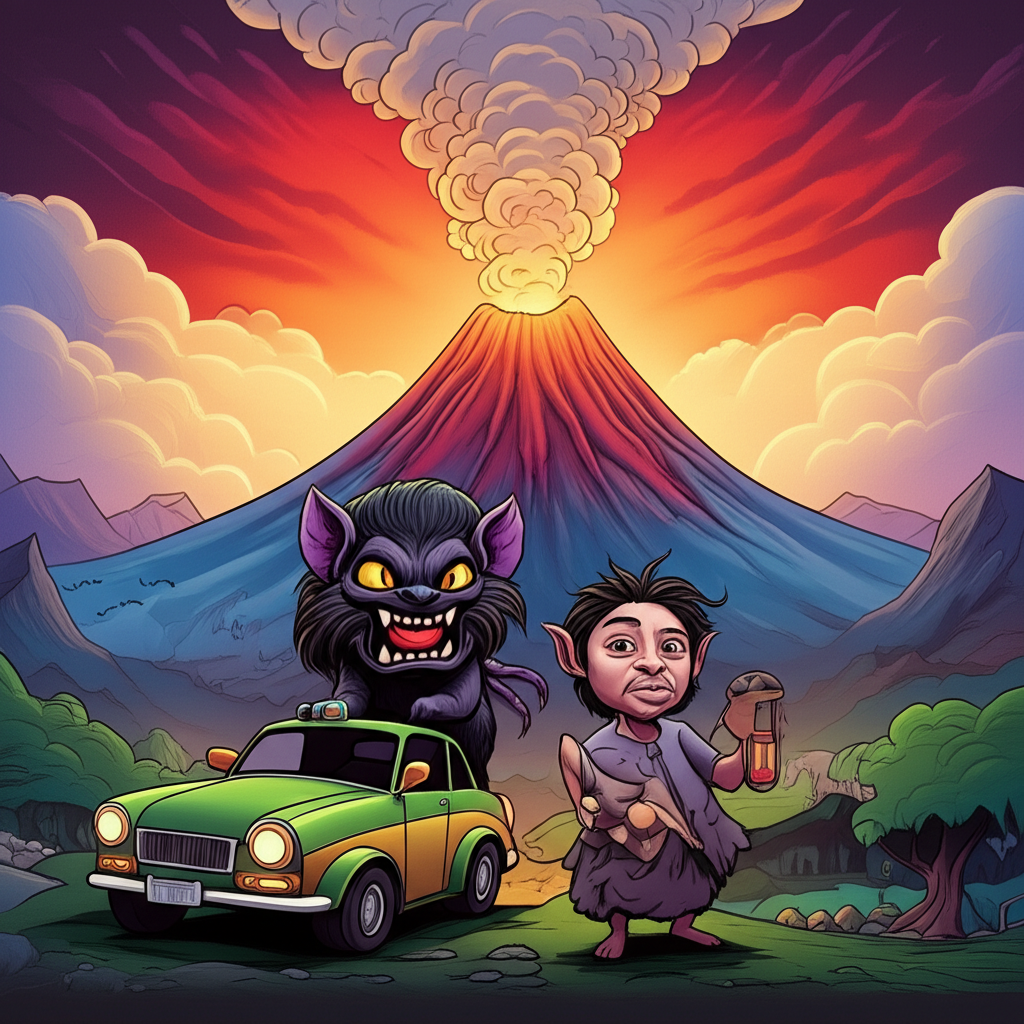
The Philippines, an archipelago of emerald islands kissed by turquoise waters, is a land steeped in a rich tapestry of folklore and mythology. Among the vibrant threads woven into this cultural fabric are the creation stories of the Tagalog people, an ethnic group primarily residing in the central and southern Luzon regions. These ancient tales, passed down through generations by word of mouth and preserved in the echoes of oral tradition, offer a fascinating glimpse into the worldview of those who first inhabited these lands. They are not divine pronouncements to be worshipped, but rather imaginative narratives designed to explain the inexplicable, to imbue the world with meaning, and to offer moral guidance in a time when scientific understanding was nascent.
The era in which these myths likely took root was one of deep connection with nature. Life for the ancient Tagalog was intrinsically tied to the rhythms of the sea, the fertility of the land, and the unpredictable forces of weather. Their environment was one of dense forests teeming with life, vast expanses of rice paddies, and the ever-present, awe-inspiring power of storms. The world, to them, was likely a place inhabited by unseen forces, spirits that dwelled in trees, rivers, and mountains, and deities that governed the celestial bodies and the very essence of existence. This animistic worldview meant that the natural world was not merely a backdrop but an active participant in their lives, influencing their harvests, their safety, and their destiny. Creation myths, therefore, served a vital purpose: to demystify the origins of their world, to explain the existence of the sun, moon, stars, and the diverse flora and fauna, and to establish a foundational understanding of the cosmos.
Central to some of these creation narratives is the enigmatic figure of Anitun Tabu. It is important to understand that Anitun Tabu is not depicted as a benevolent deity to be prayed to, but rather as a primordial force, a potent entity associated with wind, storms, and possibly chaos. Its symbolic attributes are often linked to the untamed power of nature – the sudden gusts that can topple trees, the torrential rains that can flood rivers, and the destructive might of typhoons. Anitun Tabu embodies the raw, unbridled energy that shapes the physical landscape, a force that can be both exhilarating and terrifying. It is a personification of the elemental powers that ancient peoples observed and struggled to comprehend, a representation of the unpredictable and sometimes fearsome aspects of the natural world.
The narrative of Anitun Tabu and the "Oath of Creation" unfolds as a testament to the early Tagalog people’s attempts to explain the initial ordering of their world. Imagine a time before the sun cast its golden rays, before the moon offered its gentle luminescence, and before the stars became scattered jewels in the night sky. The world, in this primordial state, was a swirling, chaotic expanse, a formless void perhaps, where primal energies coalesced and clashed. Within this nascent realm, according to some interpretations of these tales, existed beings or forces that would eventually shape existence.
Anitun Tabu, in this context, is often portrayed as a powerful entity of wind and tempest. Its very presence could stir the primordial elements, causing disturbances and setting the stage for the emergence of order. The "Oath of Creation" itself is not a document in the human sense, but rather a conceptual agreement, a binding pact made by the primal forces to establish the fundamental laws and structures of the universe. It is believed that Anitun Tabu, along with other primordial beings or elements, came together in a grand, perhaps tumultuous, assembly. During this assembly, they would have sworn an oath, a promise to govern their respective domains and to contribute to the harmonious, albeit sometimes chaotic, functioning of the cosmos.
The oath might have stipulated the roles of other foundational elements: the earth to be firm, the waters to flow, the sky to stretch above, and the winds, personified by Anitun Tabu, to carry the breath of life and the impetus of change. This was not a gentle agreement, but likely a forceful declaration, reflecting the immense power and potential volatility of these initial forces. Anitun Tabu, as the master of winds, would have been integral to this oath, perhaps vowing to carry seeds across vast distances, to power the movement of clouds, or to signify the shifting seasons. The narrative emphasizes the interconnectedness of these elemental powers, each bound by their sworn duties to maintain the balance of creation.
The symbolism embedded within the Anitun Tabu and the Oath of Creation tales is multifaceted. Anitun Tabu’s association with wind and storms can be interpreted as representing the constant flux and change inherent in the natural world. It signifies the unpredictable nature of life, the forces that can disrupt and reshape, but also the vital energy that sustains growth and renewal. The oath itself symbolizes the establishment of order from chaos, the inherent desire of existence to find structure and purpose. It speaks to the ancient understanding of a universe governed by principles, even if those principles were personified by powerful, elemental beings. For the Tagalog people of that era, these stories might have been a way to:
- Understand Natural Phenomena: Explaining the origins of wind, storms, and the movement of the atmosphere, attributing them to the actions of powerful entities.
- Establish Cosmic Order: Providing a framework for how the universe came into being, defining the roles of different forces.
- Convey Moral Lessons: While not explicitly stated, the need for an oath suggests a recognition of responsibility and the importance of adhering to one’s designated role, even for primordial beings.
- Acknowledge the Power of Nature: Recognizing and respecting the immense forces that shaped their environment, fostering a sense of awe and humility.
In the modern era, these ancient myths continue to resonate, albeit through a different lens. While no longer believed as literal accounts of creation, Anitun Tabu and the Oath of Creation tales are preserved and reinterpreted within the realm of literature, academic study, and cultural heritage. They appear in anthologies of Philippine folklore, serving as valuable historical documents that illuminate the beliefs and values of past societies. Scholars of mythology and cultural anthropology analyze these narratives to understand the psychological and societal needs they fulfilled for ancient peoples. In contemporary storytelling, elements of these myths might be adapted and reimagined in fantasy novels, films, or even video games, drawing inspiration from the rich cultural heritage of the Philippines. These modern interpretations often explore themes of nature’s power, the struggle between order and chaos, and the enduring human quest to understand our origins.
In conclusion, the tales of Anitun Tabu and the Oath of Creation are important cultural narratives from the Tagalog people of the Philippines. They represent the imaginative efforts of ancient communities to explain the origins of their world and the forces that shaped it. As Muslims, we recognize that only Allah is the true Creator and Sustainer of all existence, the ultimate source of all power and order. These traditional stories, however, offer a valuable window into the rich tapestry of human cultural heritage, showcasing the enduring power of imagination, storytelling, and the innate human desire to seek meaning and understanding in the vast and wondrous universe. They remind us of the diverse ways in which humanity has grappled with fundamental questions throughout history, weaving narratives that reflect their environment, their fears, and their hopes.





